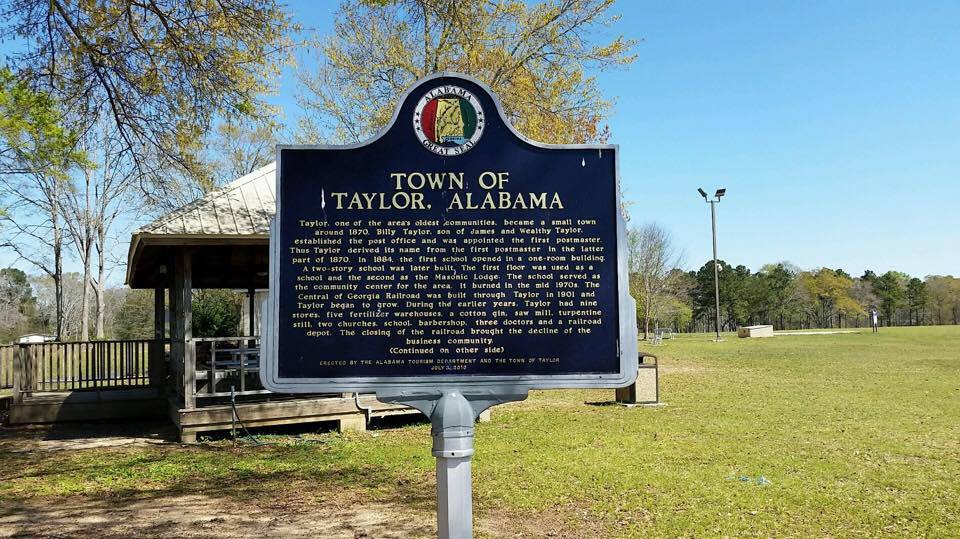
The History of Taylor, Alabama
Taylor, one of the area’s oldest communities, became a small town around 1870. Billy Taylor, son of James and Wealthy Taylor, established the post office and was appointed the first postmaster. Thus Taylor derived its name from the first postmaster in the latter part of 1870. In 1884, the first school opened in a one-room building. A two-story school was later built. The first floor was used as a school and the second as the Masonic Lodge. The school served as the community center for the area. It burned in the mid-1970s. The Central of Georgia Railroad was built through Taylor in 1901 and Taylor began to grow. During the earlier years, Taylor had nine stores, five fertilizer warehouses, a cotton gin, saw mill, turpentine still, two churches, school, barbershop, three doctors, and a railroad depot. The closing of the railroad brought the decline of the business community.
On June 6, 1967, Taylor residents voted 41-4 in favor of incorporation. The first mayor was Travis Cheshire and the first council members were Geraldine Parker, Rubye Register, Homer Lee, Thaxton Whiddon, and Howard White. While the town had a population of 125, it has since grown to approximately 2,478 and has continued to prosper. Taylor has 25 businesses, seven churches, and a shopping plaza. The City of Taylor has a sports complex with two ball fields with a park pavilion and walking trail. Taylor also has one of the largest rural water systems in the State of Alabama consisting of two deep wells and three water tanks with approximately 130 miles of water lines servicing more than 3,000 customers.
Elected in 2020 were: Mayor Billy Snell Jr., Council Members: Merritt Carothers, Kenneth Thompson, Sr., Sharon Loff, Marcus Davis, and Jerry Kelly.
Updated November 9, 2021
